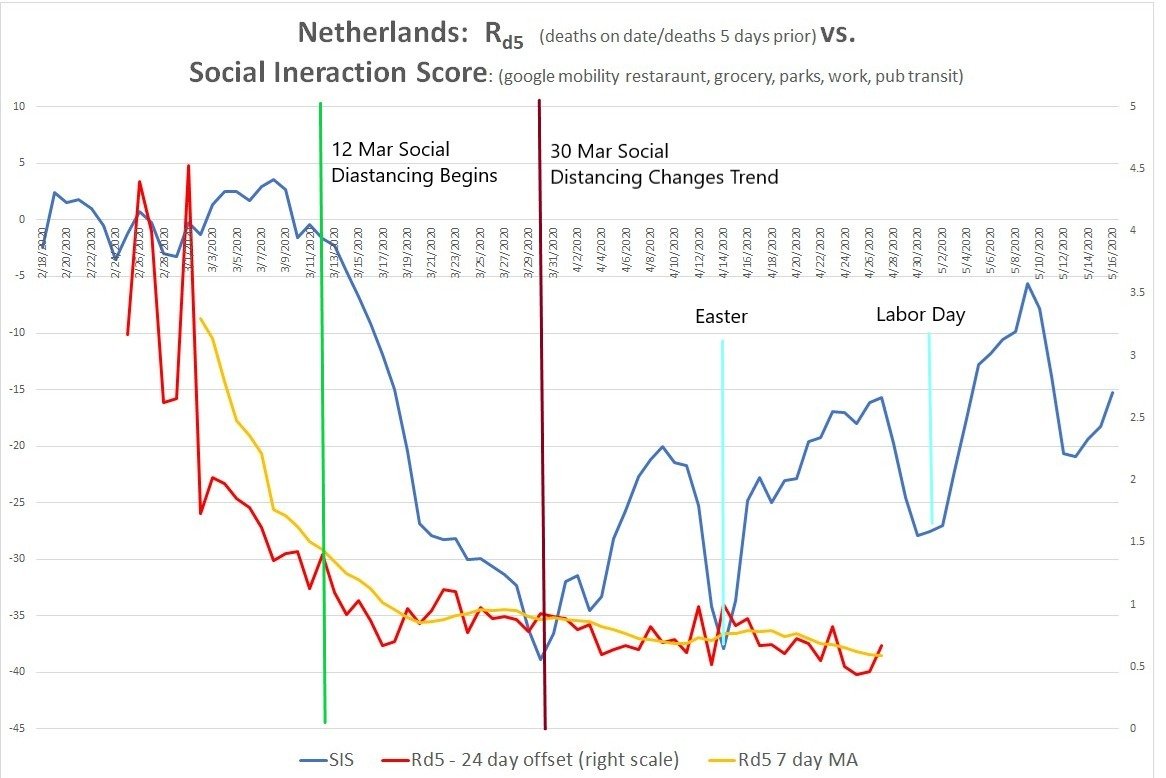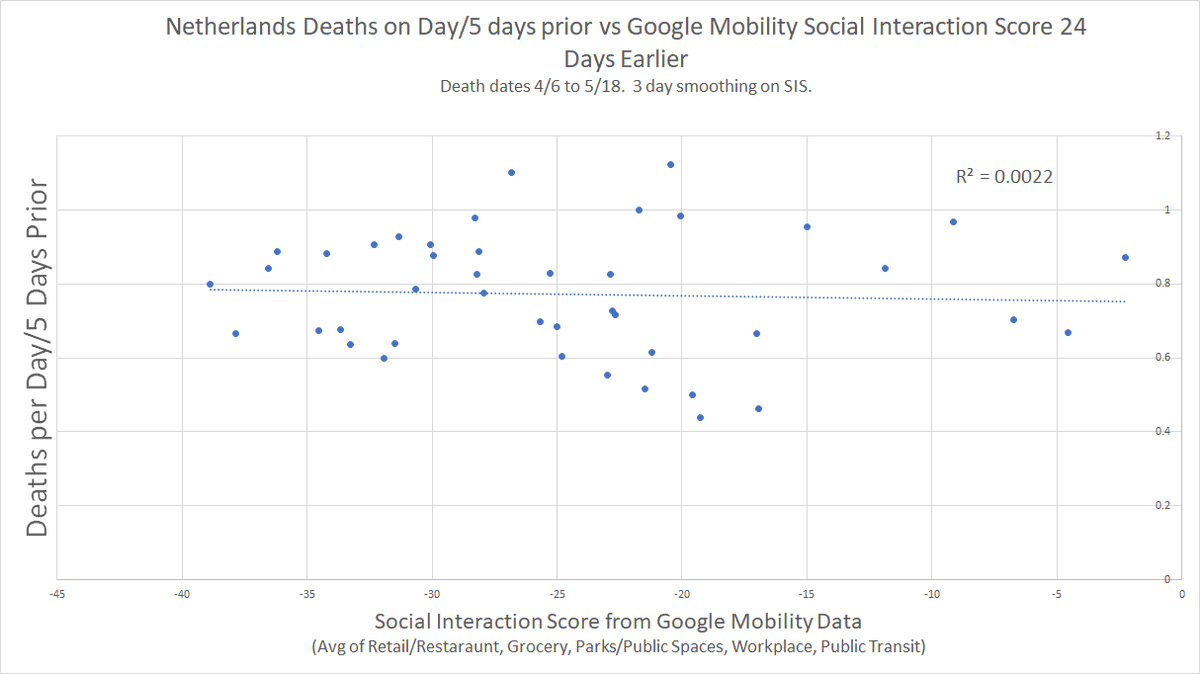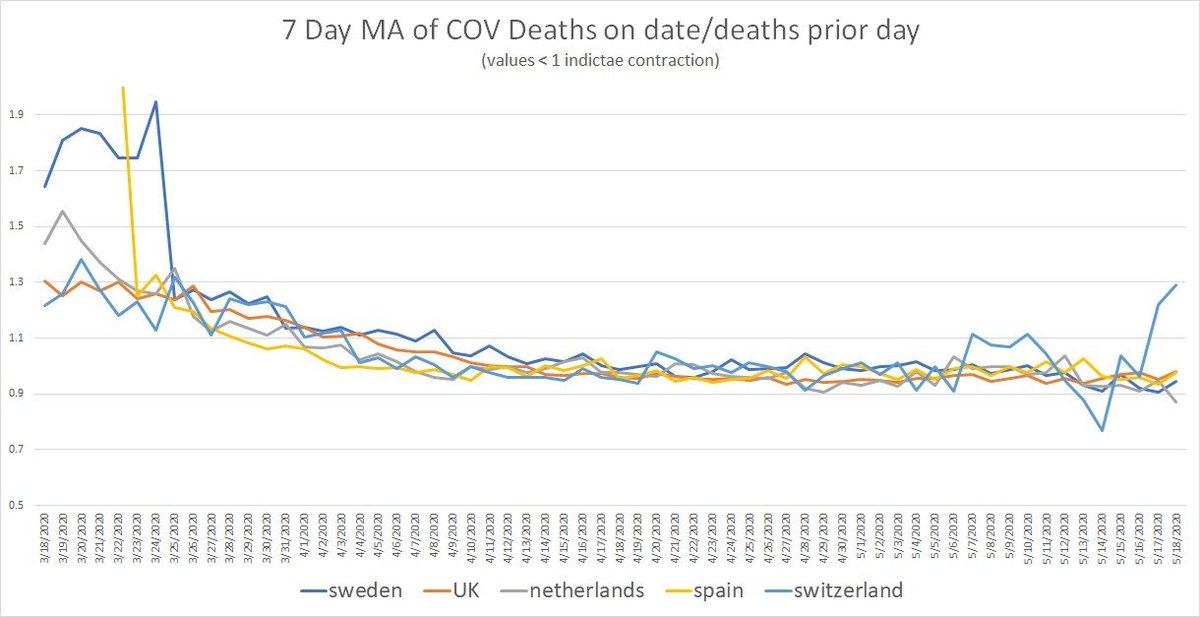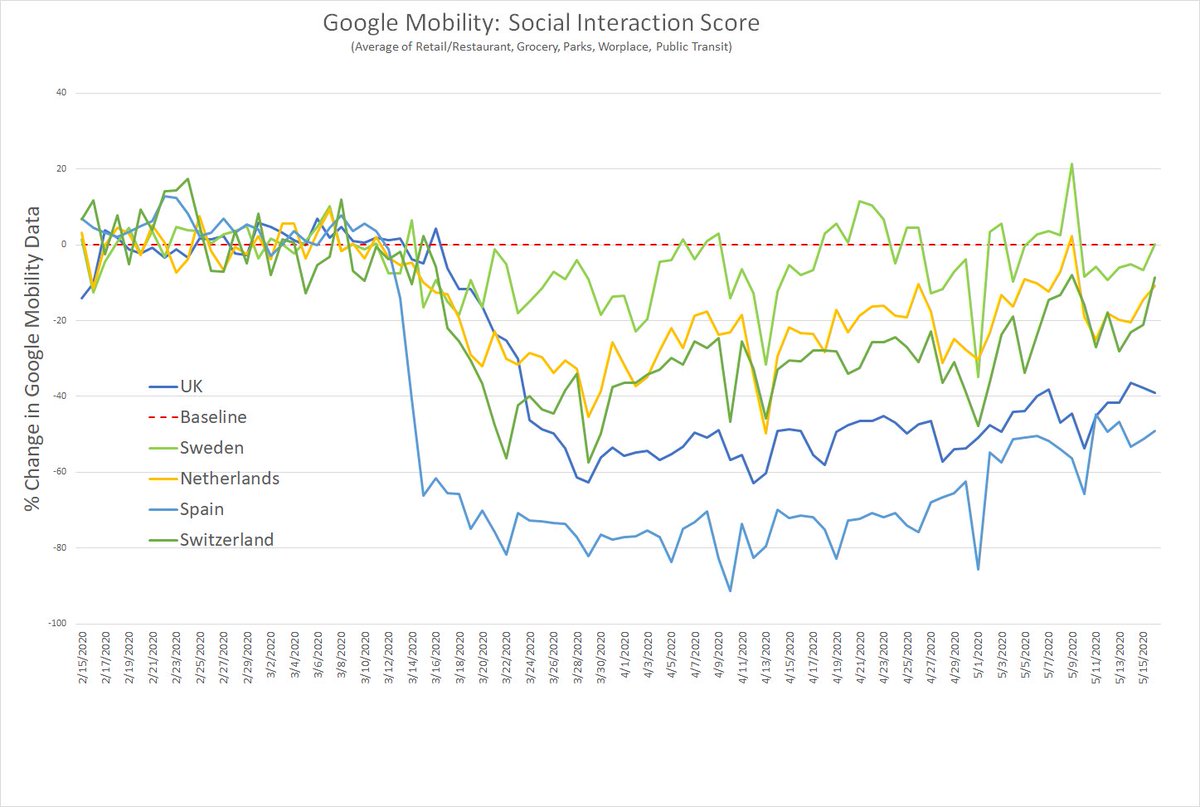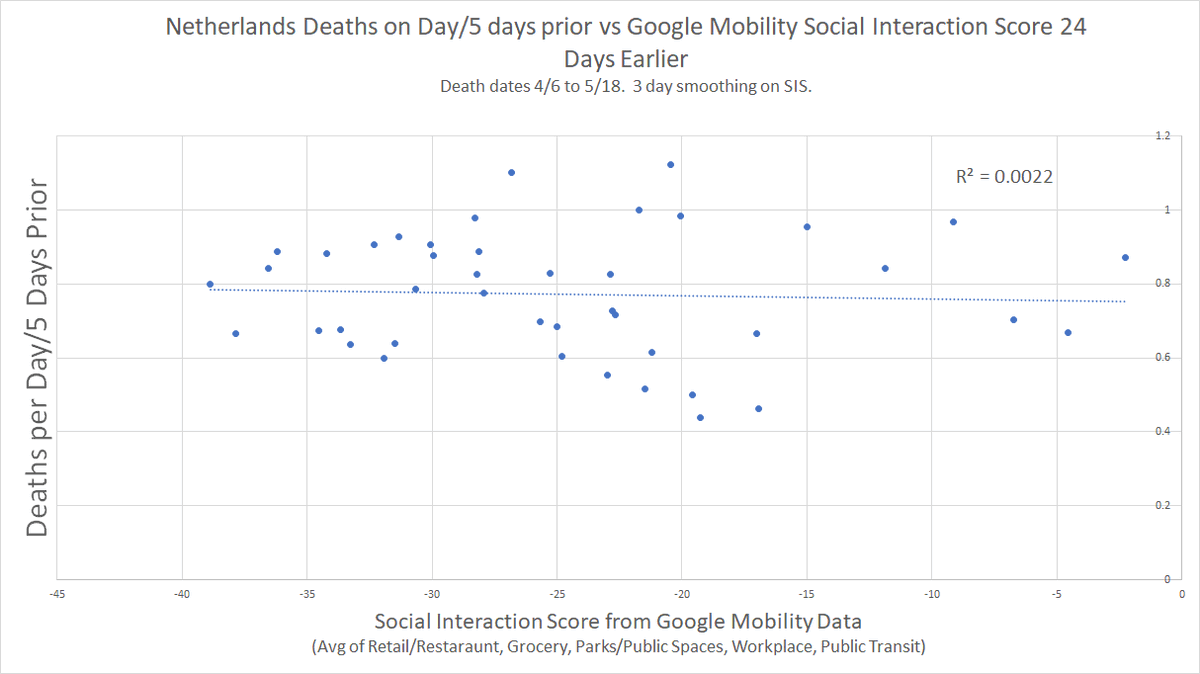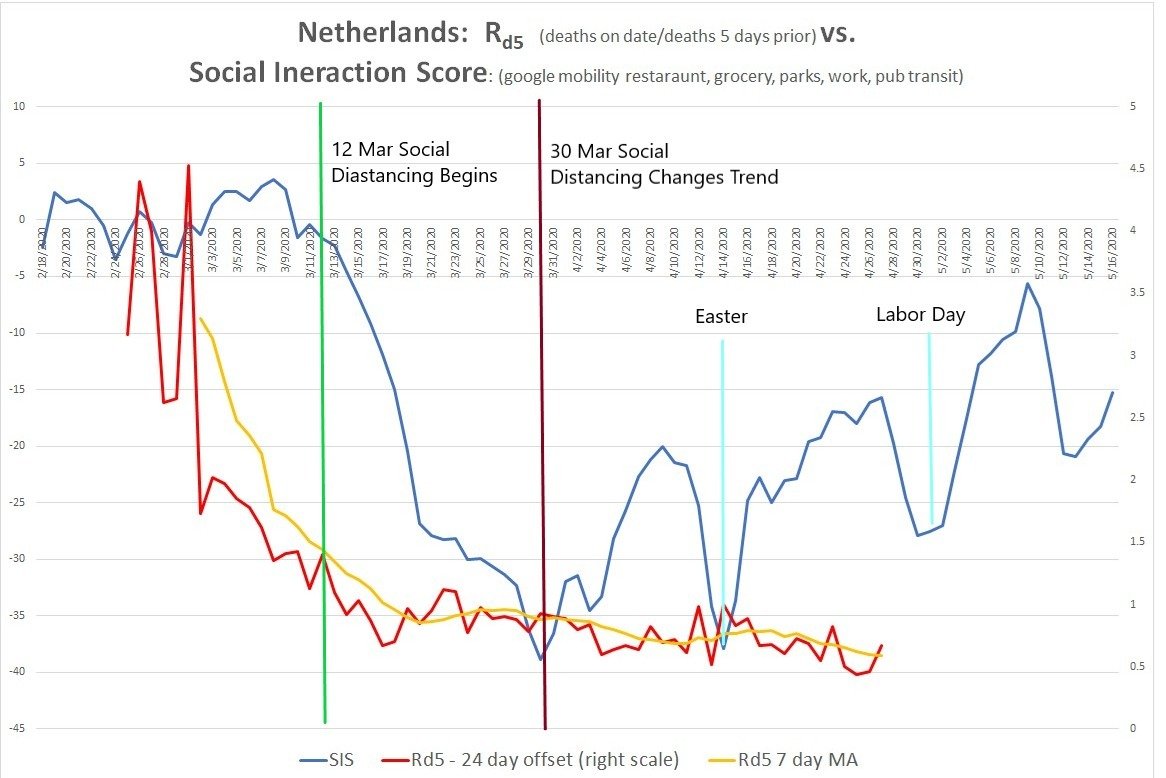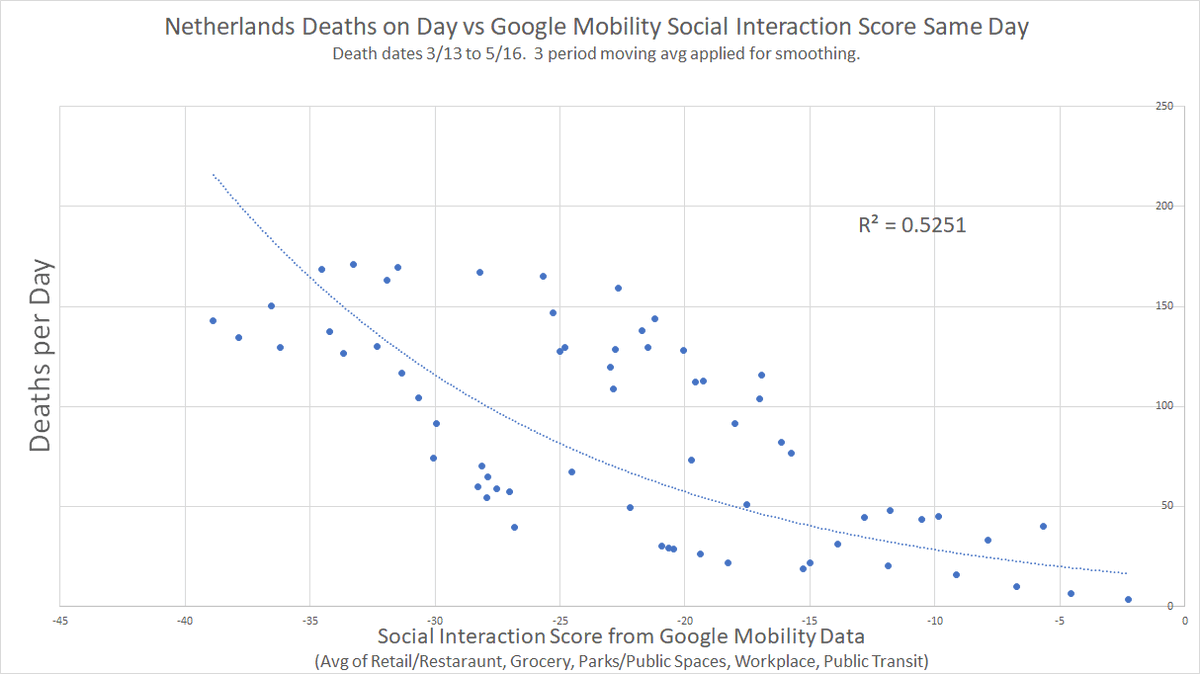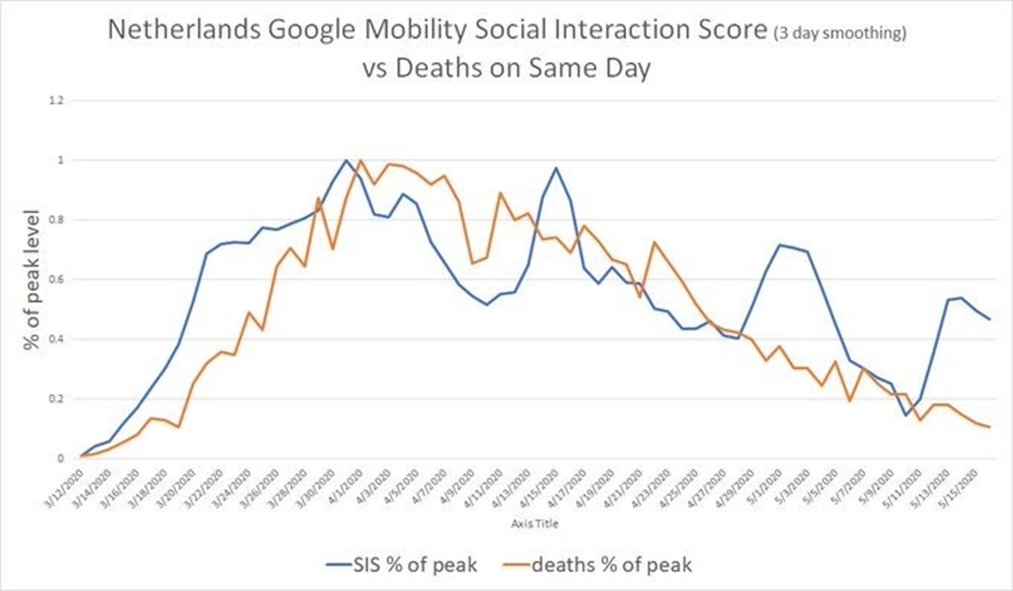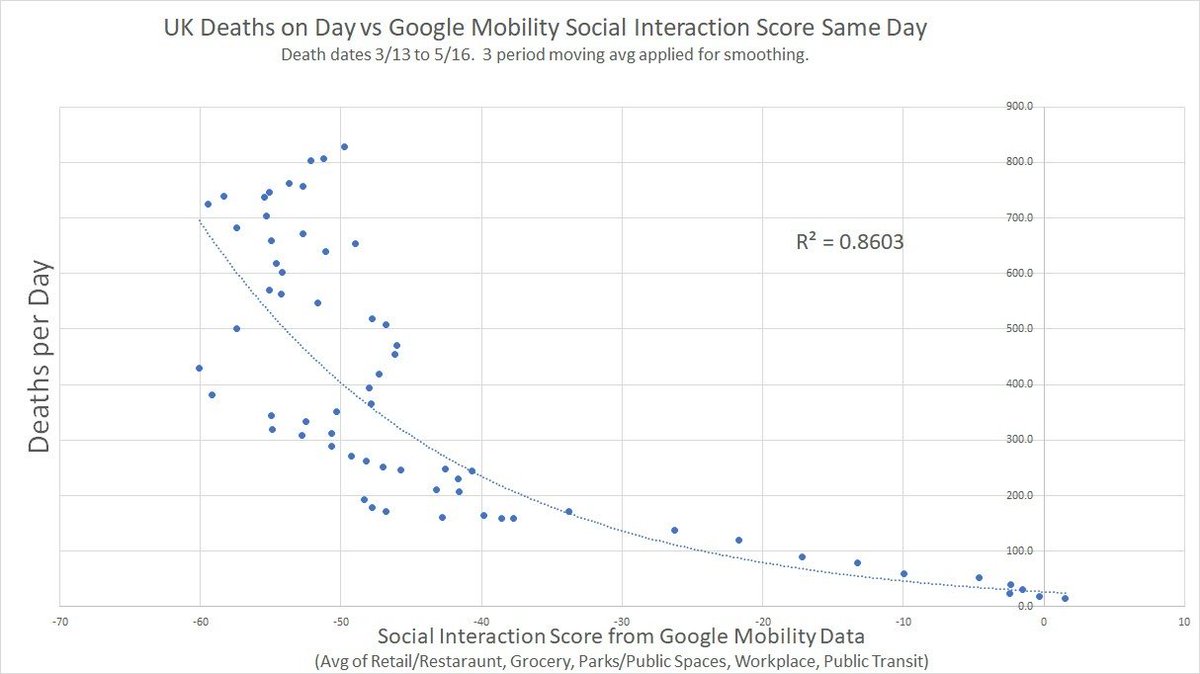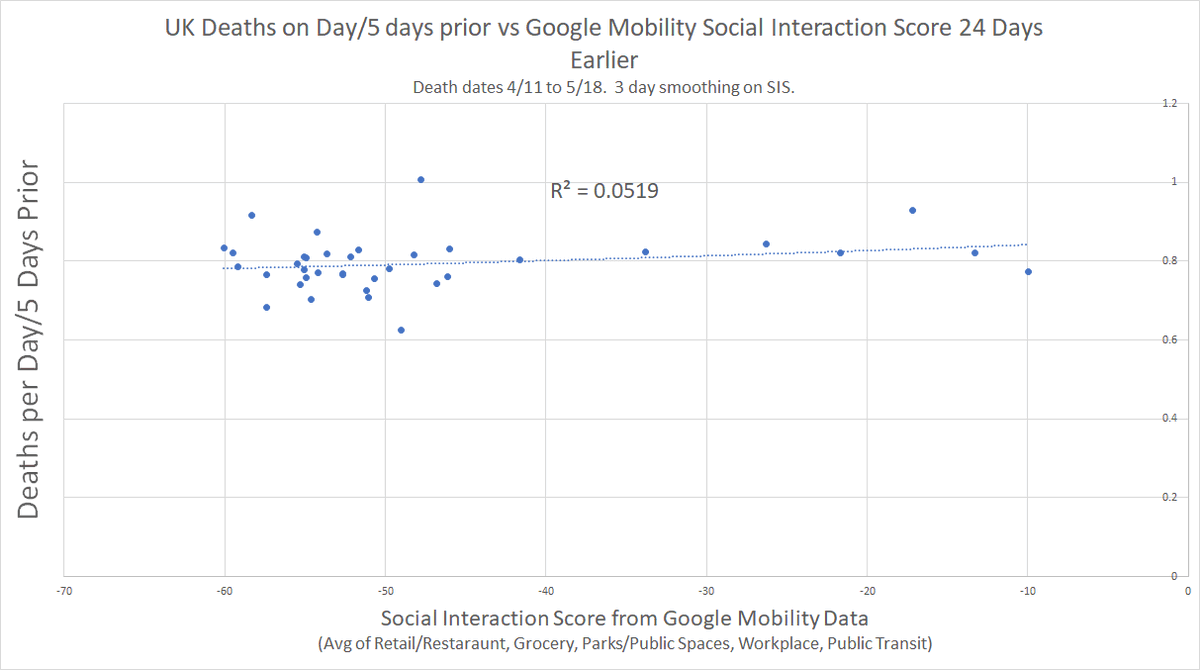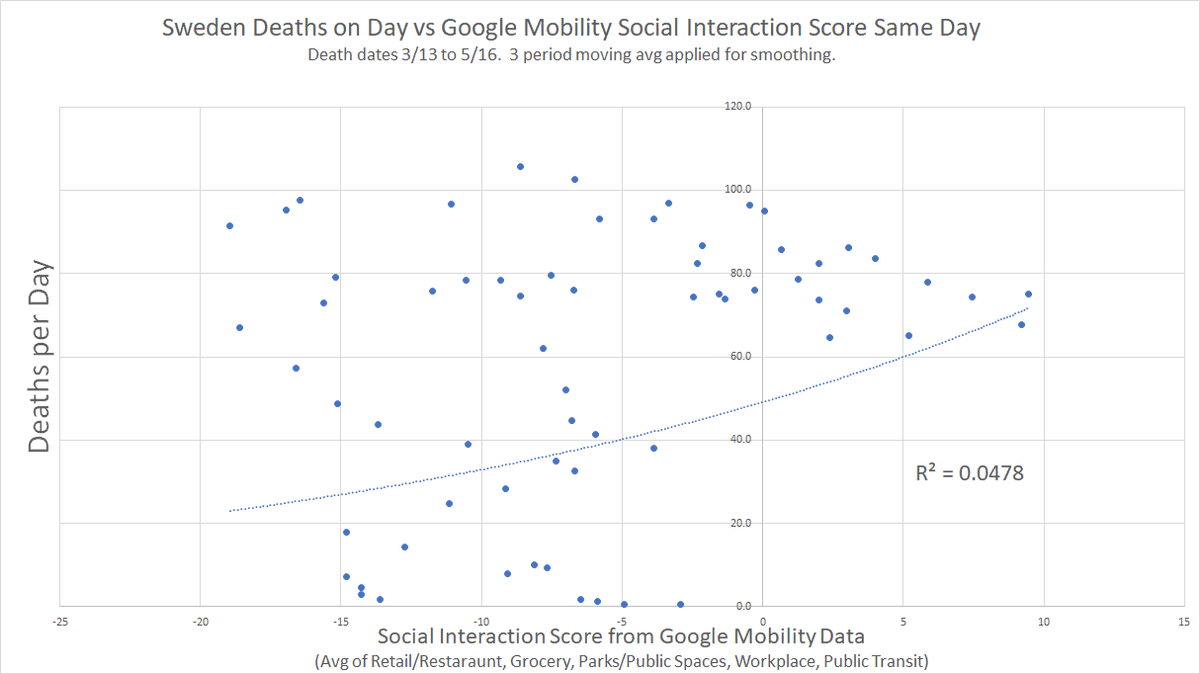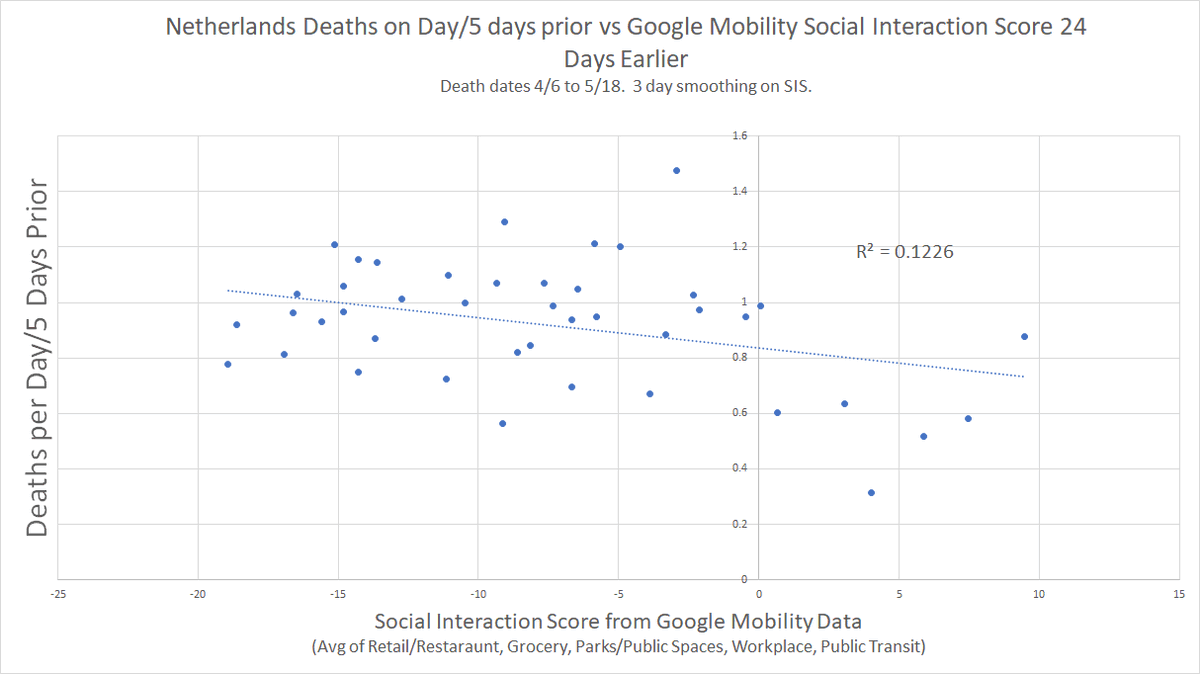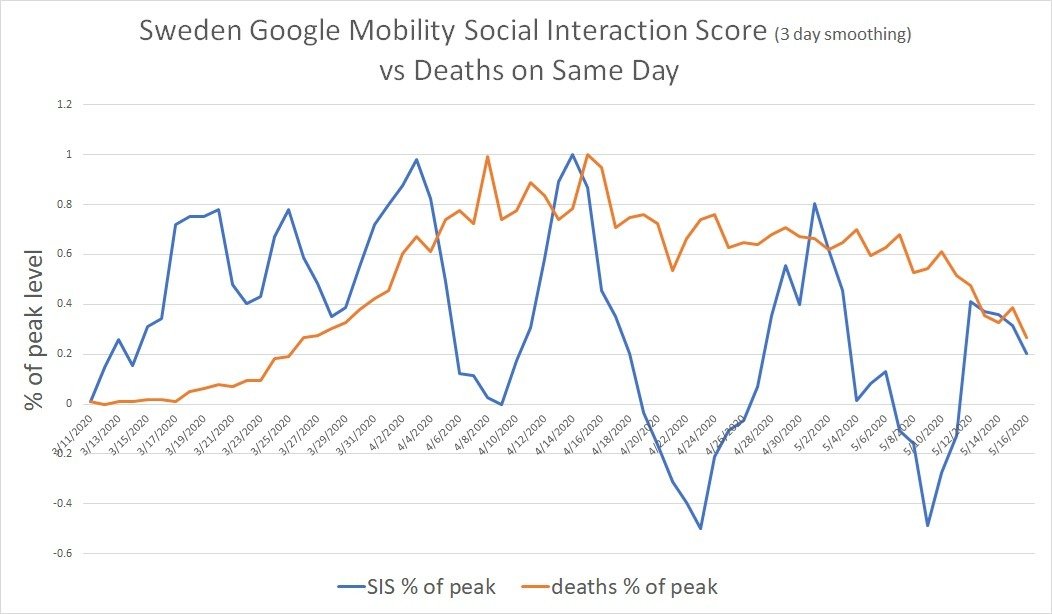i noticed some interesting things about the EU covid curves
1. the steep part of the decline in death rate came before distancing could have had effect.
2. the period of peak distancing and the period of distancing ending show the same trend.
so what did lockdown accomplish?
1. the steep part of the decline in death rate came before distancing could have had effect.
2. the period of peak distancing and the period of distancing ending show the same trend.
so what did lockdown accomplish?
it looks like nothing. it looks like it started too late to account for the sharp drop and it looks like winding it down had no effect on disease progression either.
we can see this in the regression.
there is no correlation between lockdown/phys distancing and deaths
we can see this in the regression.
there is no correlation between lockdown/phys distancing and deaths
this methodology is a little complex, so let me explain what i did.
a few EU countries provide real day of death data. this lets us plot meaningful curves to show rate of disease change.
what struck me is how similar all the curves were.
everyone got the same shape.
a few EU countries provide real day of death data. this lets us plot meaningful curves to show rate of disease change.
what struck me is how similar all the curves were.
everyone got the same shape.
but behavior in these countries was very different
many argue about who locked down when and how hard
the google mobility data lets us look at what actually happened with precise timing and quantitative results.
it seems like the best data available
this is a composite score
many argue about who locked down when and how hard
the google mobility data lets us look at what actually happened with precise timing and quantitative results.
it seems like the best data available
this is a composite score
assessing whether distancing worked brings us back to this regression
COV takes 6 days from infection to symptoms +18 more from symp to death
so, we take the day distancing began 3/12 in neth based on SIS going neg and compare to deaths 25 days later (to be charitable)
COV takes 6 days from infection to symptoms +18 more from symp to death
so, we take the day distancing began 3/12 in neth based on SIS going neg and compare to deaths 25 days later (to be charitable)
if distancing works, we'd expect R death to drop once it took effect and rise when it recedes. instead, we see absolutely nothing. distancing has zero effect and no ability at all to predict R(deaths) in the future.
i looked at lots of intervals
no correlation, no causality.
i looked at lots of intervals
no correlation, no causality.
it can be hard to tell what you're looking at in a scatter, which is why we need this as a check. it validates those results
R was dropping rapidly before SIS even went negative, then it flattened out in its decline and showed no sensitivity to SIS. (recall this is 24d offset)
R was dropping rapidly before SIS even went negative, then it flattened out in its decline and showed no sensitivity to SIS. (recall this is 24d offset)
with the offset, the distancing and the effect should line up exactly and, if distancing were perfectly effective, the curves should show the same shape.
but they don't.
but they don't.
it looks like distancing had no effects on deaths, but, interestingly, it appears that deaths did drive distancing.
this is strong correlation. and we know that distancing today cannot affect deaths today. so the causality can only flow one way
distancing was a panic reaction
this is strong correlation. and we know that distancing today cannot affect deaths today. so the causality can only flow one way
distancing was a panic reaction
we can see this another way.
i found peak distancing and set it as value 1.
i took peak deaths and did the same.
i then expressed all other days of both as % of peak.
look how well they line up.
distancing was a pure response to the state of that day.
i found peak distancing and set it as value 1.
i took peak deaths and did the same.
i then expressed all other days of both as % of peak.
look how well they line up.
distancing was a pure response to the state of that day.
but, because it had no measurable effect 24 days later, this response was clearly ineffective.
we get the same response in the other EU countries
(though not in the US who was different)
the UK wins for "top karen" which, given their sudden volte face, makes sense .86 R2!
we get the same response in the other EU countries
(though not in the US who was different)
the UK wins for "top karen" which, given their sudden volte face, makes sense .86 R2!
and actually a slight inverse to prediction R2 on deaths. they correlate to more, not less distancing, but i do not suspect this is meaningful in any causal sense.
but the same patterns on peak distancing and deaths.
(SIS here is far more jagged because sweden distanced far less than others so 2% changes show up as big %'s of peak)
spikes down are easter and labor day
(SIS here is far more jagged because sweden distanced far less than others so 2% changes show up as big %'s of peak)
spikes down are easter and labor day
all in all, this becomes a very neat package.
disease decline preceded response. when disease became a big deal, distancing followed daily death reports quite closely. but deaths later were not effected by this behavior.
so lockdowns and time at home were fruitless panic
disease decline preceded response. when disease became a big deal, distancing followed daily death reports quite closely. but deaths later were not effected by this behavior.
so lockdowns and time at home were fruitless panic
this was all fear and security theater.
there's just no other conclusion from this data
it shows no efficacy.
many EU governments are now waking up to this and vowing not to make this mistake again.
will the US follow suit?
there's just no other conclusion from this data
it shows no efficacy.
many EU governments are now waking up to this and vowing not to make this mistake again.
will the US follow suit?

 Read on Twitter
Read on Twitter